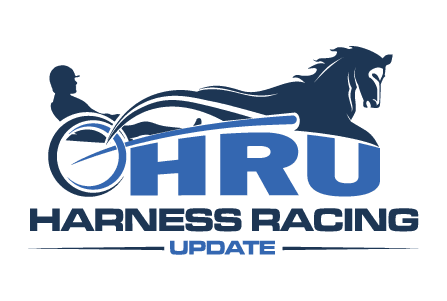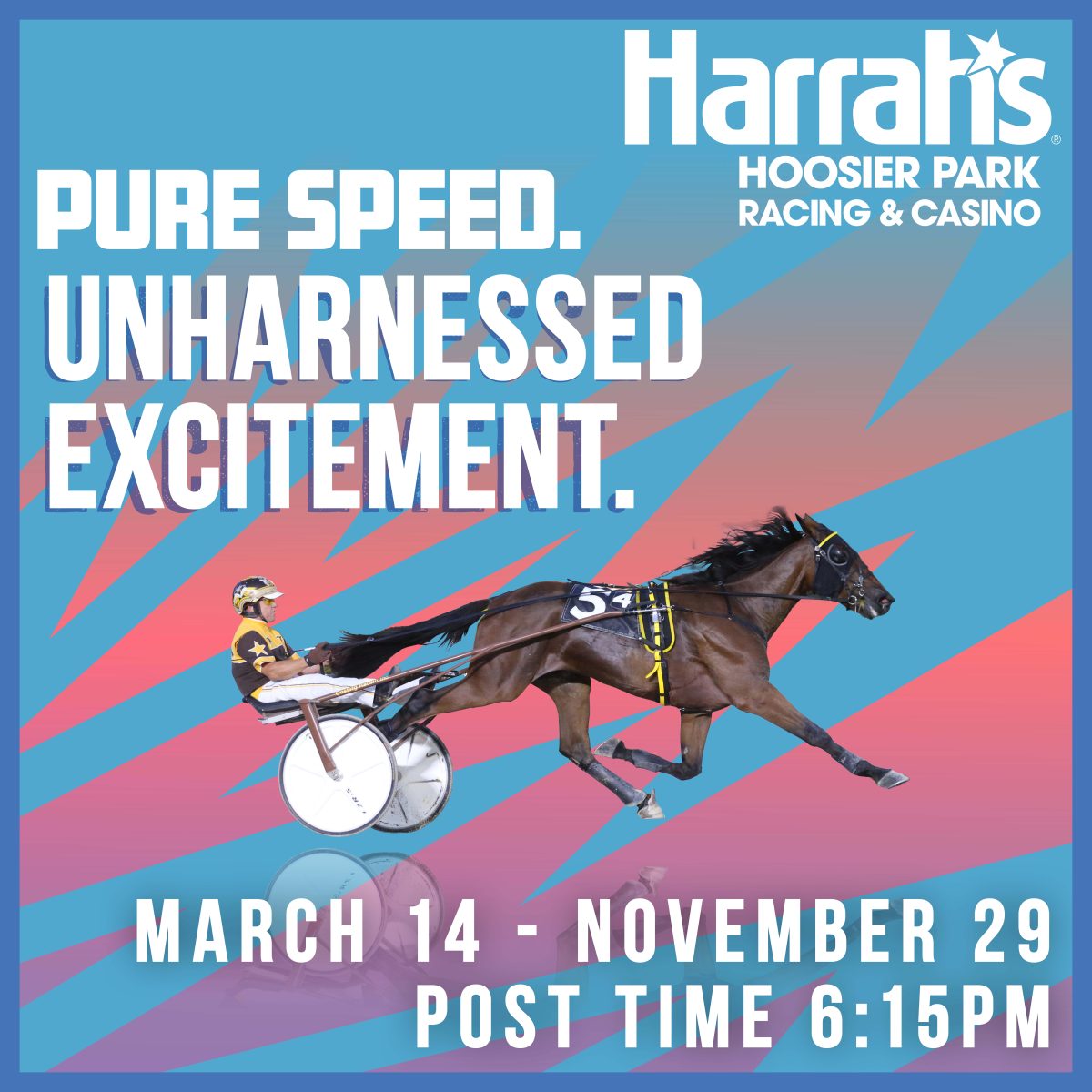Tobin outlines major differences between standardbreds and thoroughbreds in terms of breakdowns
Famed researcher Dr. Tom Tobin of the Gluck Institute at the University of Kentucky said studies show one death per 700 starts in Kentucky thoroughbreds, one death per 1,000 starts for the same breed in England and one death per 16,600 starts in the Ohio standardbred. A thoroughbred is 36 times more likely to succumb to a racing injury than a standardbred.
Tidbits: Last week I promised to tell the story about our bizarre bidding experience at Harrisburg this year.
Frank “The Elder” Antonacci, Frank M. Antonacci and myself find seats on the aisle, right near our bid spotter. Our favorite trotting colt is about to enter the ring. I have priced the colt at $400,000 in today’s market, but have slightly discounted the price as he has a fault that we can live with, but it is still a fault. Hip #164 Goodashim Hanover, pronounced Good – as – him, enters the ring. He is a full brother to the fabulous racehorse and sire Father Patrick. I have $50,000 shouts the auctioneer. Then dead silence. I have $25,000 he claims. The three of us are mystified. Still no bidding. I say to Frank M. they don’t even have $25,000.
Thinking we are on the verge of robbing the bank, Frank M bid $35,000, the auctioneer begs for $50,000 Dead silence again. There is not one more bid for a minute and that is a long time. We are sure that are going to hammer this great colt down to us for $35,000. “The Elder” grabbed my arm and said, ‘If anyone but Hanover was selling that horse we would have owned him by know,’ and as those words came of his lips, ‘I have $40,000’ came bellowing from the auction stand. This was just the beginning of torture.
The colt went from $40,000 to $175,000 in slow but normal increments, when “The Elder” had seen enough, ‘$200,000,’ he told the bid spotter. A very long pause and then $205,000 lights up the board. Frank M gets into the spirit again trying to shut the door. ‘$225,000,’ a long pause and then $230,000 appears on the board. Finally $240,000 seals the deal for us on a horse that we could have had for $35,000. Along with the ticket for the colt and the photo gal, came Richard Patterson bounding down from the stand. He is one of the best auctioneers in captivity and a wonderful man to boot. “Never in my life have I ever seen anything like that. It took longer to sell that horse than any four we sold put together.”
I hope he proves that the torture we went through to get him was worth the effort, stay tuned…
Richard Cummins asks: What is your opinion of California racing and the story in HRU by Bill Finley about its demise (full story here)?
I have the utmost respect for Bill Finley. For certain he has been a major contributor to the various horse racing breeds for a long time. That said I hate negativity. When you have to go negative to sell newspapers or the like you should start selling cars.
Should we worry about the demise of harness or thoroughbred racing in a major state as California because of a year that for sure was an anomaly. I think NOT.
PETA hasn’t got that kind of punch to knock out a multi-billion dollar industry. However, we should not sit back and hope the situation corrects itself. Something major must be done to the Santa Anita surface. Truly something was awry.
As for Del Mar and the Mongolian Groom breakdown, the video of him warming up went viral on Facebook and if you had seen it you would have cried. There were 30 veterinarians brought in for the Breeders’ Cup and they all did off-track inspection of each and every horse, yet not one was put in charge of watching the horses on the track. There is no question in my mind that if it was a harness track the state vet would have immediately seen the problem, scratched the colt and we would no longer be having this discussion.
Eric Cherry and Bob Adams both commented in HRU that we should separate ourselves from the thoroughbred industry, Eric even suggested we should call our horses “trotting horses” not standardbreds, because it is more understanding to the layman. I couldn’t agree more.
After reading Bill Findlay’s column I called Dr. Tom Tobin of the Gluck Institute of the University of Kentucky to pick his brain on the overall situation. To my surprise he had just finished the article himself and was finishing a paper on the difference of the breeds in relation to breakdowns. For sure he writes like a professor and uses terminology that is far above my pay grade, yet it is quite understandable.
Basically, he points out that the stress on the standardbred limbs in race mode is considerably less than a thoroughbred. They don’t go as fast. The controlling factor is an individual that sits behind them in a sulky that is on wheels and also has a beneficial lift to it, as opposed to the jockey that provides additional weight to all four limbs. Standardbreds are structurally more tough and their gait is less stressful, which is basically due to a mutated gene called the “Gait Keeper Mutation.” It is found in many breeds but mostly the American standardbred, a little less in the Swedish standardbred and about one third less in the French standardbred.
There have been many studies on the difference in FMI’s (Fatal Musculoscelatal Injury) in various breeds and it does not take one a long time to learn that in NO WAY is there any similarity in the two breeds. Not to bore you with details, the most astounding FMI figures were as follows. There was one death per 700 starts in Kentucky thoroughbreds, one death per 1,000 starts for the same breed in England and one death per 16,600 starts in the Ohio standardbred. Dr. Tobin feels a thoroughbred is 36 times more likely to succumb to racing injury than a standardbred.
Dr. Tobin also pointed out that using medication as a scapegoat for this problem is simply wrong. He states unequivocally that the use of Lasix does nothing at all to exacerbate the death rate. Is a matter of fact he is a strong proponent for the use of Lasix in the equine athlete. I will discuss the Lasix question in depth with him at a later date. Stay tuned…
Joel Kravet asks: Is there any benefit to the horse using stall bandages?
I am not sure. If put on properly with a good liniment or a sweat there is no doubt that the legs will be tighter in the morning than they would be without the bandages.
I also think that if a horse rolls or gets cast the bandages may prevent some cuts and bruises, but I am not 100 per cent with their use. As my barn transitioned from cheap horses to good young horses I used the stall bandages less and less.
When a colt would tear a bandage off I would never put one back on unless he was on crossties in a truck going somewhere. I feared a colt getting corded was worse than having soft legs. Most soft tissue damage comes from a bad step on a bad racetrack and stall bandages or tighter legs are not likely to be a preventative.
The funny thing is that 50 years ago if I ever walked my shed row and saw a horse with his legs not bandaged I would go nuts.
Roger Simpson asks: The most logical trotters to breed to, Muscle Hill, Chapter Seven, and Father Patrick are all next to impossible to get bookings to. Do you think there are any new stallions out there that will be competitive with those top three?
No one is that smart as to answer a question like that in a positive fashion. However, I can give you an opinion of some that may well compete.
I have very positive things to say about Walner, Six Pack, and International Moni.
All three were very good colts. They all have pedigrees that will provide distant outcrosses if that is what you like. International Moni has no Valley Victory in his pedigree which means you could breed him to almost any mare. Six Pack with his speed and fabulous gait could well be the next Cantab Hall. He has a ton of Valley Victory blood and would match up well with Conway and Andover blood. Walner has a little Valley Victory blood on both the sire and dam side, but still will cross with most families. There are already rave reviews on the Walner weanlings.
All three are modestly priced compared to what it will cost to get into the top three so my guess is that the ROI could be fabulous.
Someone is going to ask me why Greenshoe is not in this conversation. My answer is that as much as I love the horse I think I would like to see more for that kind of money and I am not even certain of his availability.
Richard Keller asks: What is your take on the Steve Assmussen positives?
First of all, anyone who thinks that acepromazine is not a performance-enhancing drug better check again. If you can calm a high-strung horse and make him rateable you are definitely creating a faster animal. When I was a kid, the most sought after pre-race was Dr Burns TQ, an amazing product that would take the edge off the craziest of horses.
That said, in this case I question the amount of the medication found. One of the positives was barely over the limit. I had a barn full of ace pills and used them very often, especially with young fractious colts. I can easily see in a big barn a slip up of not taking a horse of the daily dosage in proper time to avoid detection. This by no means makes it right and he must be penalized, but the fact that it was two horses makes it doubtful to me that it was used as a pre-race. It was most likely an error in withdrawal time and should be treated as such. This is just another case of the media grabbing on to some dirt to write about. It would be a wonderful move for all horse racing commissions to only publicize blood doping, steroids, Class 1 narcotics and bicarb violations. All others should be fined small amounts and be thrown in the garbage. If contamination is discovered, names are not necessary. A warning about the contaminated product will suffice.
Thanks to all my readers for the kind words. Please keep the questions coming in and don’t forget to visit us at Sunshine Meadows any Saturday morning if you are in the area. Lots of future great horses are in training there. Have a wonderful week.

















